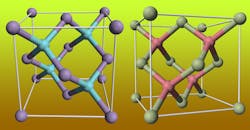Q&A: Charles Trantanella, Chief Scientist at Custom MMIC
Download this article as a .PDF
CD: You gave a presentation at EDI CON 2016 titled, “Reaching New Heights in Mixer Linearity with GaN MMIC Technology.” For those who may not have seen it, what prompted you to investigate developing mixers based on GaN technology?
CT: Essentially, it was engineering curiosity! I have been designing passive MMIC mixers for nearly 20 years, and during that time I’ve always jumped at the chance to create mixers on new technologies. The impetus for this curiosity began in the early 2000s when the GaAs industry pivoted towards pHEMT technology, which was touted as being vastly superior to the current MESFET technology in all regards. And in many circuits, such as amplifiers and switches, pHEMT certainly was better. But surprisingly enough, for passive mixers, I found that pHEMT was inferior to MESFET from a linearity perspective.
For example, the IP3 of a diode mixer fabricated on pHEMT was typically 2 to 3 dB lower than a similar MESFET-based design. I refused to accept this as the norm, so I began looking for ways to increase mixer linearity, since our customers generally do not ask for less linearity—they always want more. One of the paths I’ve chosen to accomplish this goal is to design at least one passive mixer on each process for which we have access.
A few years ago, we at Custom MMIC expanded into GaN development, and I was excited to use this technology since GaN offered so many benefits on paper: higher breakdown voltage, higher diode turn-on voltage, better efficiencies, etc. However, I also knew that when it came to passive mixers, the proof was in the fabricated design. Over the past few years, I’ve had the privilege of designing mixers on a number of different processes and foundries, and not all have performed as advertised. However, one GaN process in particular exceeded all of my expectations, and designs from this process were the ones I discussed at EDI CON 2016.
CD: Do you really believe that GaN technology will play a significant role in the mixer arena in the future?
CT: Absolutely. GaN has demonstrated the ability to combine high linearity in mixers with low conversion loss, high port-to-port isolations, and good harmonic/spur suppression—properties that are desired by almost all microwave system designers. The only downside to GaN is the need for higher LO drive as compared to MESFET or pHEMT mixers. However, GaN is also very good for highly efficient power amplifiers, so the drive problem is an easy one to solve. Additionally, GaN mixers tend to achieve a much higher IP3-to-LO power ratio than pHEMT or MESFET-based mixers—a term called “linear efficiency.” In other words, with GaN we’re generating high linearity more efficiently than we could with other technologies.
CD: At EDI CON last September, you explained that GaN-based mixers can now achieve input IP3 levels ranging from +35 to +40 dBm. What has the company done in this area since then, and what is planned for the future?
CT: Over the past few months, we’ve been working to release a few of our current GaN mixers as standard products, a task which should be accomplished in the next two quarters. Additionally, we are exploring a variety of mixer topologies, including balanced diode, balanced FET, and cold FET designs at numerous frequency bands, since each topology offers unique benefits depending on the operating frequency and application. Finally, we are starting to integrate LO driver amplifiers with our GaN mixers, in order to reduce the high LO drive requirement. This is a very exciting area of research, for it also allows us to use techniques such as wave shaping to further enhance the linearity of the mixer.


